
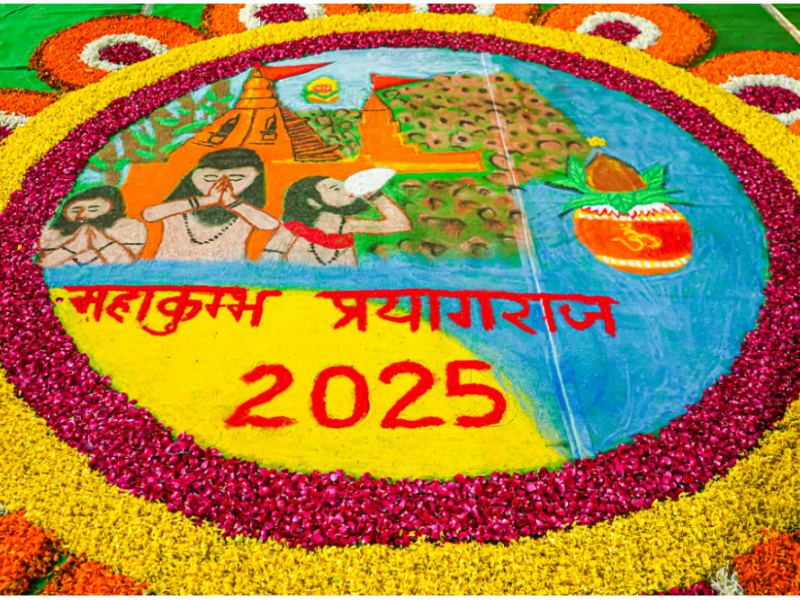
Talking about the mythological significance of Kumbh revolves around the churning of the ocean, or Samudra Manthan, as it is called. The gods and demons did it to get the invaluable jewels and the nectar of immortality or Amrit. The ocean was churned, Mount Mandrachala becoming a churning stick, and the King of the Snakes, Vasuki, acted as the rope.
Lord Vishnu took the form of a tortoise, providing the base for Mandrachala with the fear that it might slip and submerge in the ocean. The story represents the churning of our minds to go deep into ourselves, from where all auspicious things arise, ultimately leading to liberation.
1. The Story of the Immortal Nectar
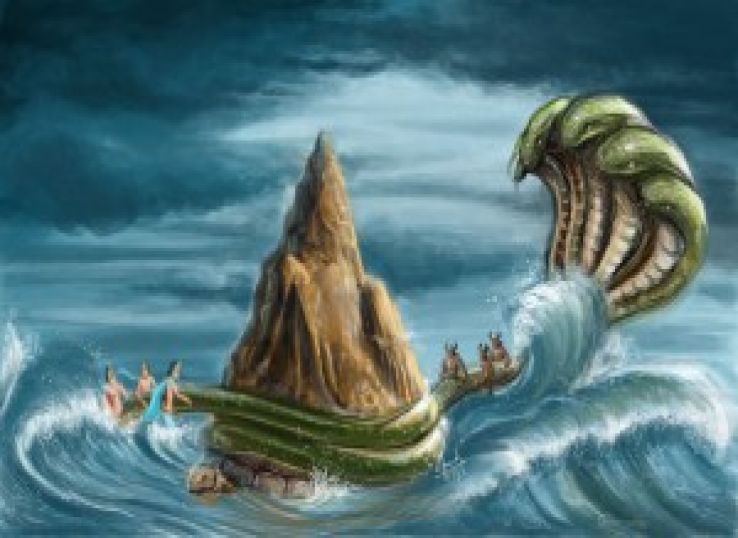
The first thing obtained from the churning of the ocean was the deadly poison Kaalkoot, consumed by Lord Shiva, who, upon doing this, came to be known as Nilkantha. With the churning going on appeared Kamdhenu, the Uccaishrava Jayanta, the son of Lord Indra, caught sight of the pot of the nectar of immortality, and he snatched it from the hands of God Dhanvantari.
Seeing this, Shukracharya, the Guru of demons, came into action, and the demons chased Jayanta. As stated by the divine counting, one day of Gods is one year of mortal beings, and Jayanta kept on running for 12 days to save the pot of the nectar from going into the hands of the demon.
2. Days or 12 Years
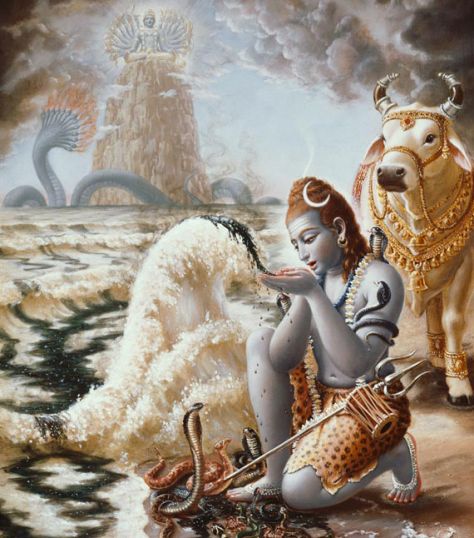
In the 12 days of the Gods or 12 years of the mortal beings, Jayanta put down the pot of the immortal nectar at four places: Haridwar, Prayag, Nashik-Trimbakeshwar, and Ujjain. At these places, the sun, moon, and planets reach an exclusive astrological arrangement during which the Kumbh Mela is held. Brihaspati, the Guru of the Gods, saved the pot from the demons with the help of the Sun, Shani, and the Moon, who saved the Kumbh or the pot of the nectar from getting damaged.
As it is taken down in the Skanda Purana, the Kumbh Mela is not just celebrated where the nectar pot was put down but where it spilt with the putting down of the pot. It is supposed that these drops of the immortal nectar gave spiritual powers to these places. It is to make oneself attain those powers that Kumbh Mela is celebrated at all four locations.
3. Time Frame of the Kumbh Mela
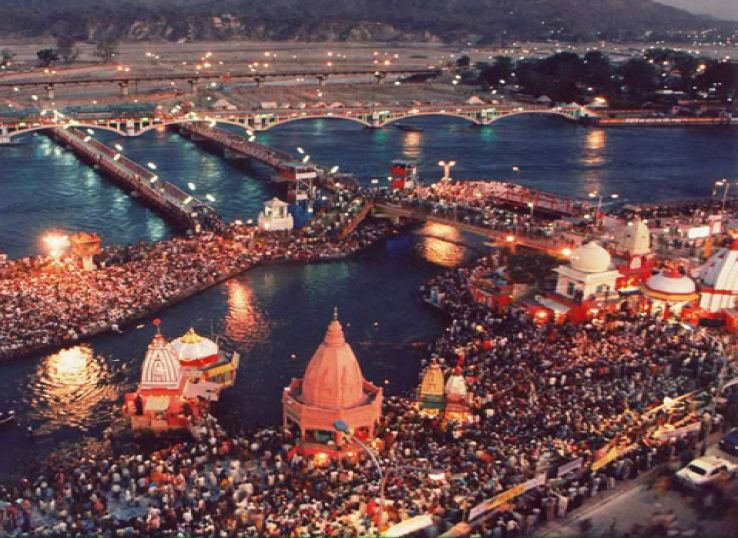
The usual Kumbh Mela occurs every 3 years, the Ardh half Kumbh Mela occurs every 6 years at Haridwar and Allahabad Prayag, and the Purna or the complete Kumbh Mela is held every 12 years on the basis of the movement of the planets, at four places: Prayag, Haridwar, Ujjain, and Nashik. The Maha Kumbh Mela occurs at Prayag after 144 years.
According to different zodiacs, the place for Kumbh Mela is decided contingent on the position of the Sun, Moon, and Jupiter.
4. Astrological Aspects of the Kumbh Mela
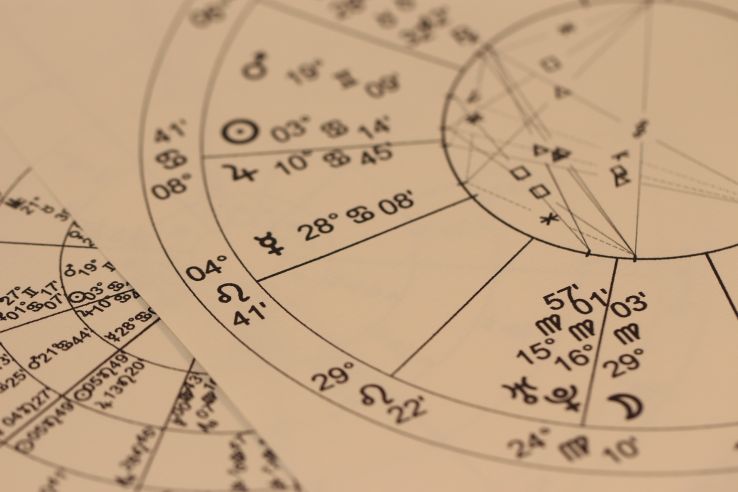
The Astrological aspect of Kumbh is linked to traversing stars and planets and their certain alignment. According to the Vedas, the Sun is considered life-giving. The moon is considered a lord of Mind. Jupiter, or Brihaspati, is the Guru of Gods. As it takes nearly 12 years for Jupiter to complete the zodiac, the Kumbh is celebrated in accordance at one place about every 12 years.
• When Jupiter enters Aquarius and the Sun and Moon in Aries and Sagittarius, Kumbh occurs at Haridwar.
• The Kumbha occurs at Prayag when Jupiter is positioned in Taurus and the Sun and Moon are positioned in Capricorn.
• When Jupiter enters Leo and the Sun and Moon in Cancer, the Kumbha occurs at Nashik and Trimbakeshwar.
• When Jupiter is in Leo and the Sun and Moon in Aries, the Kumbha occurs at Ujjain.
Since Jupiter is in Leo, the Kumbh is known as the Simhastha Kumbh. It is held at Trimbakeshwar, Nashik, and Ujjain.
5. Last Purna Kumbh - The Nashik -Trimbakeshwar Kumbh - 2003-04
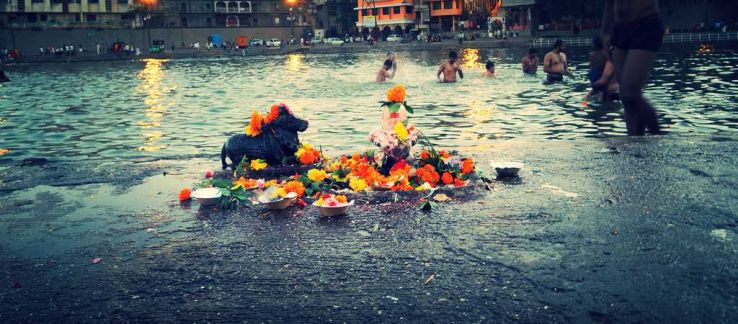
The last Simhastha Kumbh Mela was held at Nashik and Trimbakeshwar in 2003-04. The Kumbh Festival, a human congregation of religiousness, takes place at Nashik-Trimbakeshwar, Prayag, Haridwar, and Ujjain. Ardh Kumbh takes place at Prayag and Haridwar every 6 years. The Kumbh Mela is held at the banks of sacred rivers every 12 years.
It takes place on the banks of Godavari at Nashik—Trimabkeshwar. At Prayag, it takes place at the Sangam, the confluence of Ganga-Yamuna and the invisible Saraswati, at the banks of Ganga at Haridwar and the banks of Kshipra in Ujjain. It is marked by the fact that millions of people from India and all around the world participate in this fair.
Nashik is the part of Dandakaranya where Rama lived throughout his exile. Trimbakeshwar is one of the 12 Jyotirlingas. The Godavari River originates here on Bramhagiri hills. Trimbakeshwar has the tombstone of Shri Sant Nivruttinath, the founder of Nath Sampradaya.
This Kumbh is exclusive, as Vaishnav Akhadas and Shaiva Akhadas bathe together at Prayag, Haridwar, and Ujjain separately. Because of arrangements made by the Peshwas because of clashes between ascetics of both sects, Vaishnva Akhadas bathe at Nashik, Shaiva, or Sanyasis, and Udasin Akhadas bathe at Udasin Akhadas batheshwar.
Historical References
6. Maurya and Gupta Periods
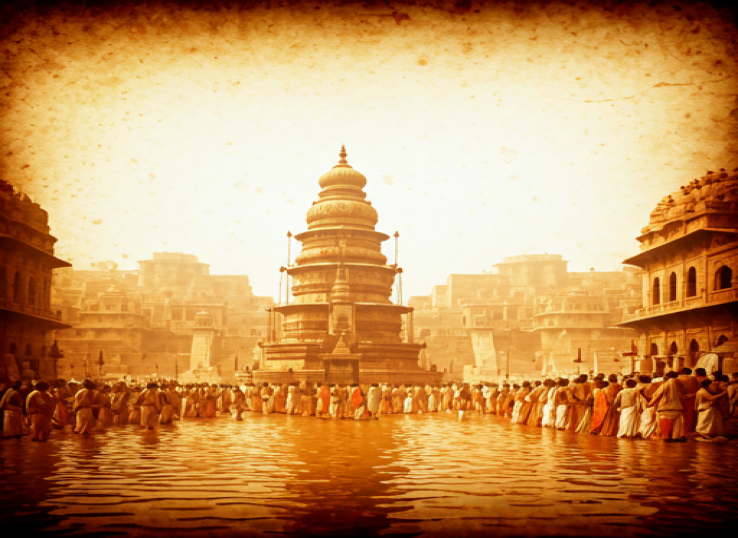
The Kumbh Mela has its first historical references in the Maurya and Gupta periods, from the 4th century BCE to the 6th century CE. At this time, Ashoka played an important role in promoting Buddhism, and according to historical records, the Maha Kumbh Mela enticed pilgrims from different parts of India.
With the increasing popularity of Hinduism, so did the implication of the Maha Kumbh. The Gupta dynasty further elevated the Kumbh Mela’s status as a sacred gathering. The city of Prayag became a centre for Kumbh.
7. Medieval Period
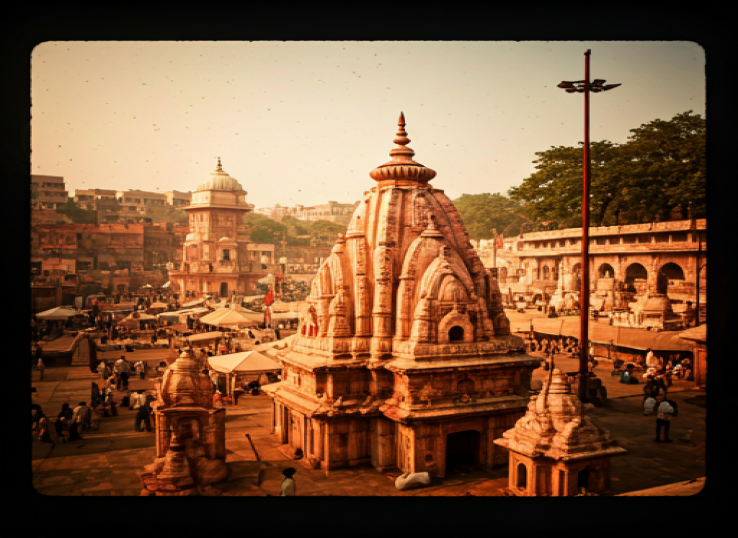
During this time, the Kumbh Mela became a grander spectacle with royal patronage. The dynasties of Chola and Vijayanagar in South India, the Delhi Sultanate, and the Mughal Empire played important roles in its development.
Akbar took part in the Kumbh Mela when India was under the rule of the Mughals Mughals. The monarchs constructed the ghats and infra development around the sacred sites.
8. Akbar's Association with the Naga Sadhus
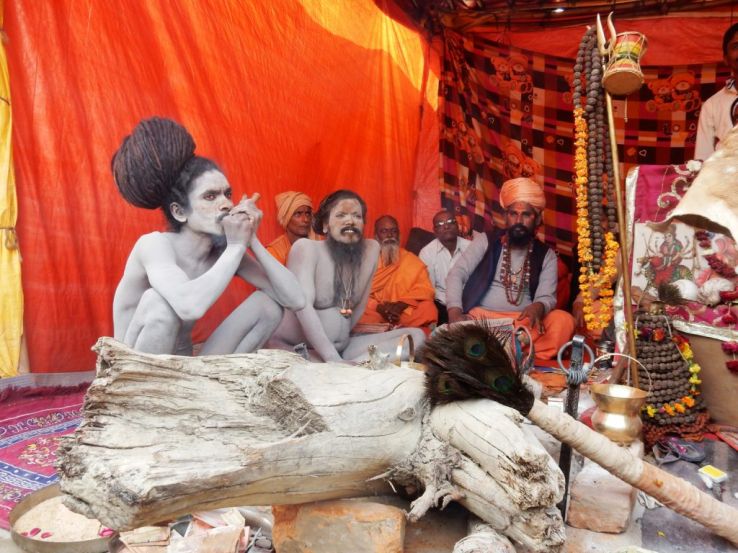
A notable event associated with the Maha Kumbh Mela is the association between Akbar and the Naga Sadhus. It is said that in 1565, throughout the Maha Kumbh at Prayag, Akbar sought to comprehend the Naga Sadhus' implication and role in the pilgrimage.
Akbar was impressed by the discipline and devotion of the Naga Sadhus.
Because of this, the Nagas were given the right to lead the Royal entry into the Kumbh Mela’s procession. This gesture symbolizes the harmony that has risen above all the religious differences throughout the Kumbh Mela, accenting the comprehensive nature of this gathering.
9. Colonial Era
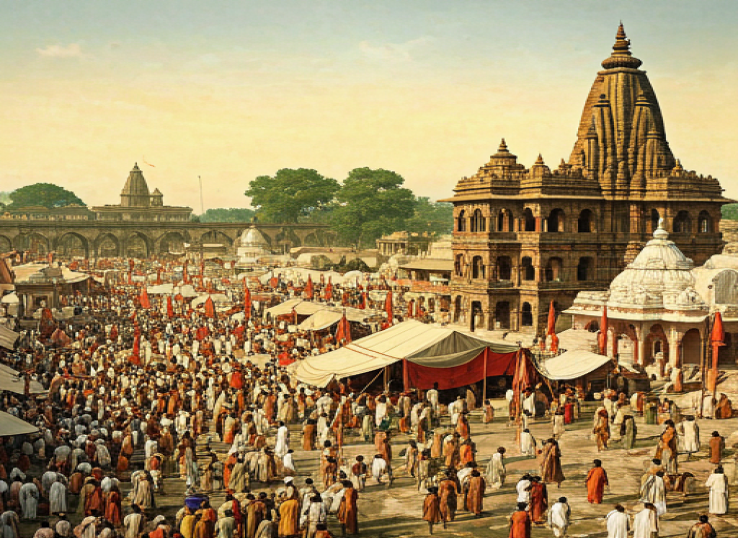
The Britishers were greatly in awe, seeing the diversity of the pilgrimage and left behind accounts offering insights into the historical expansion of the Kumbh Mela.
One of the British administrators, James Prinsep, documented the Kumbh Mela in the 19th century, describing the practices, number of worshipers, and socio-religious dynamics at play during this event.
10. Kumbh Mela After Independence
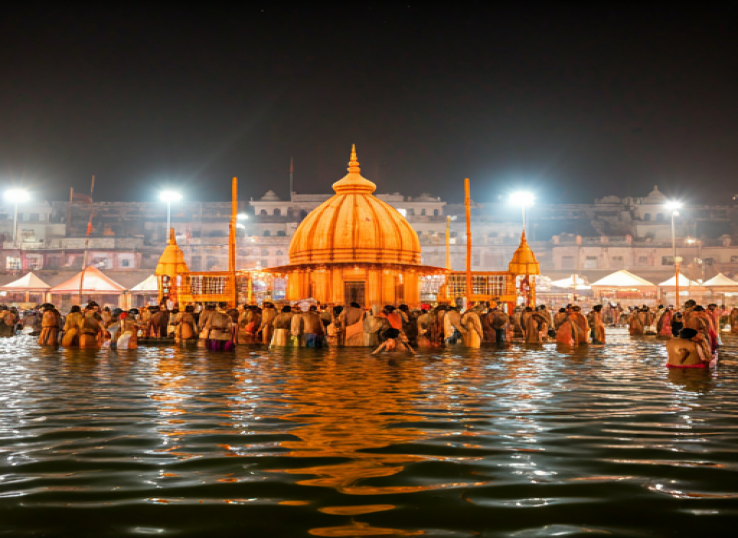
After India was freed from British rule in 1947, the Kumbh Mela became a symbol of national unity. The government documented its cultural importance and began actively participating in organizing it.
The Maha Kumbh paints India's rich heritage on the canvas. Different states present a cultural fiesta with music, art, and dance forms. Besides its religious significance, the Maha Kumbh has become a cultural extravaganza for celebrating India’s unity and diversity.
11. Kumbh Mela In Modern Times
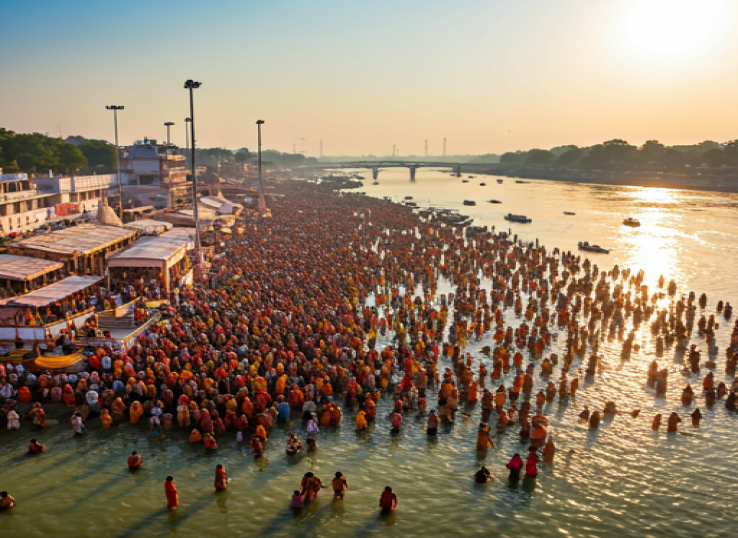
In 2017, UNESCO recognized this grand event, Kumbh Mela, as a cultural heritage, highlighting its historical and cultural significance.
It signifies India's rich religious and cultural heritage. If you want to visit the upcoming Kumbh, remember the dates of the event.
Recommended For You
-
 Best Places to Stay During Kumbh 2025: From Tents to Luxury Hotels
Best Places to Stay During Kumbh 2025: From Tents to Luxury Hotels
-
 The Ultimate Guide to Maha Kumbh Mela 2025 at Prayagraj
The Ultimate Guide to Maha Kumbh Mela 2025 at Prayagraj
-
 Understanding the Importance of the Sangam: The Confluence of Faith
Understanding the Importance of the Sangam: The Confluence of Faith
-
 Best Places to Eat in Goa: Indulge in a Culinary Delight
Best Places to Eat in Goa: Indulge in a Culinary Delight
-
 The Future of Drone Tourism: How Drones are Changing the Travel Industry
The Future of Drone Tourism: How Drones are Changing the Travel Industry
-
 10 Reasons Why Diwali is Celebrated
10 Reasons Why Diwali is Celebrated
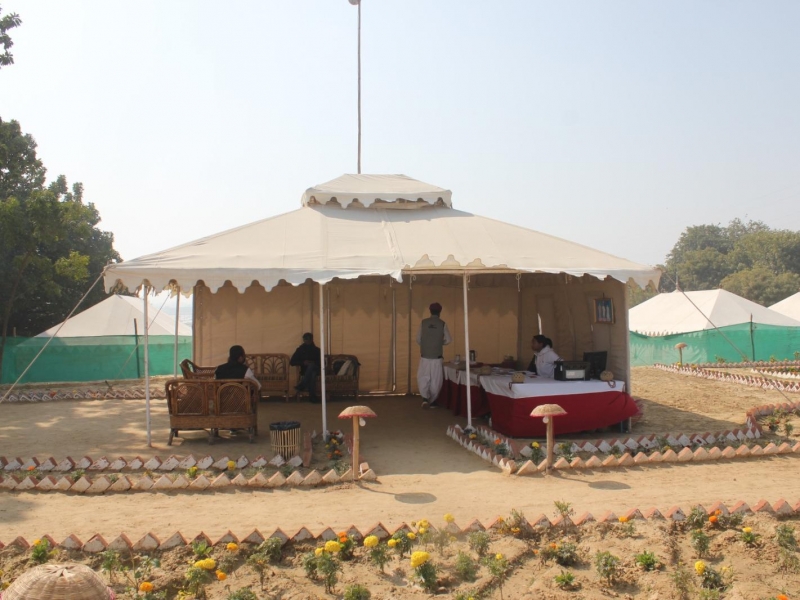
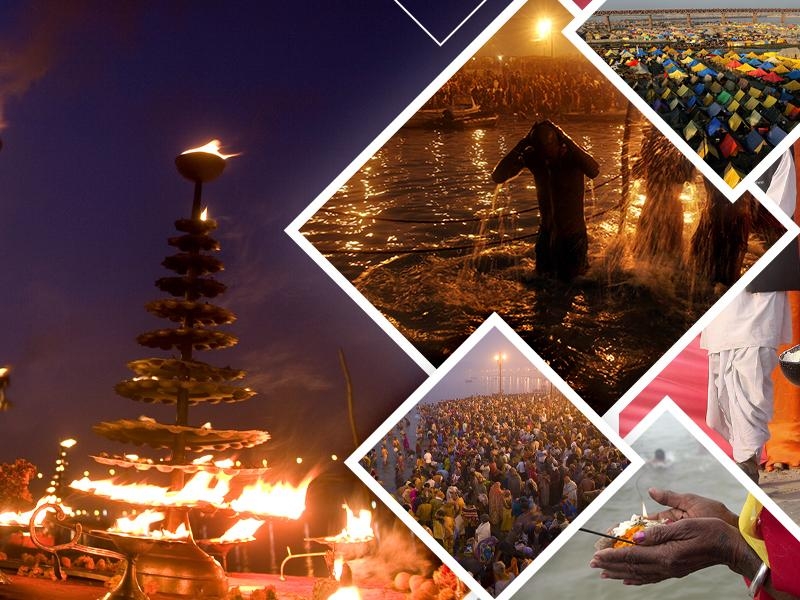
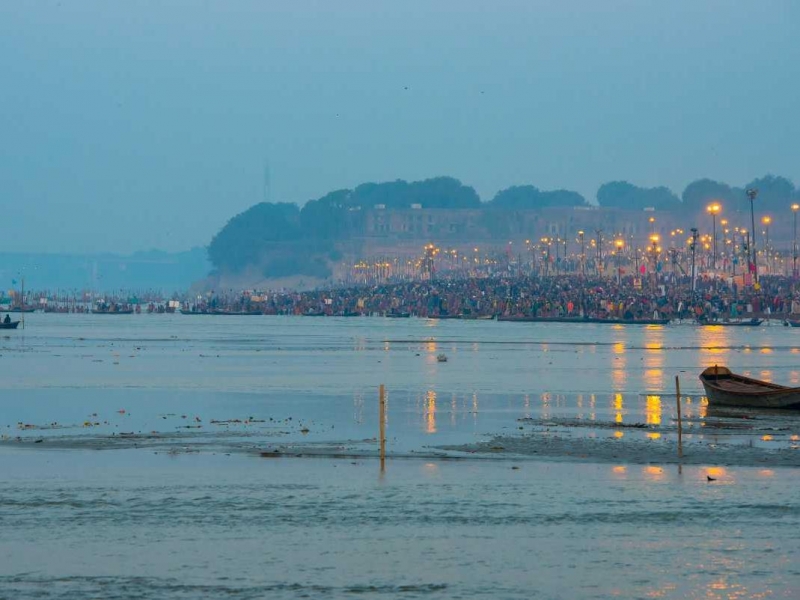


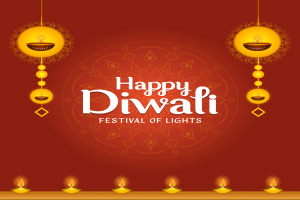
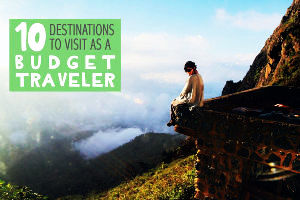

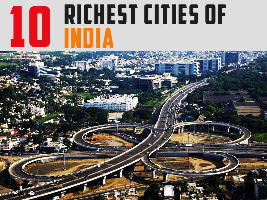


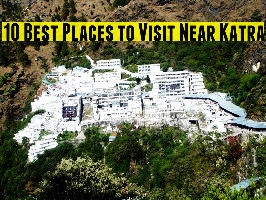

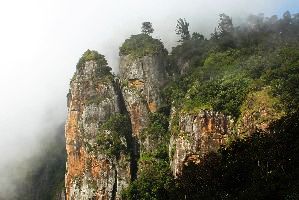


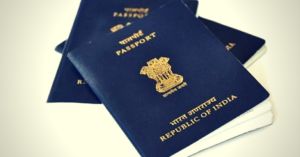


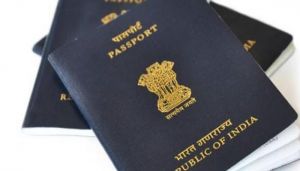
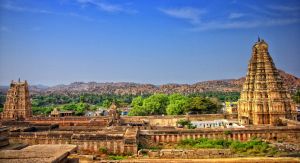

Author Bio